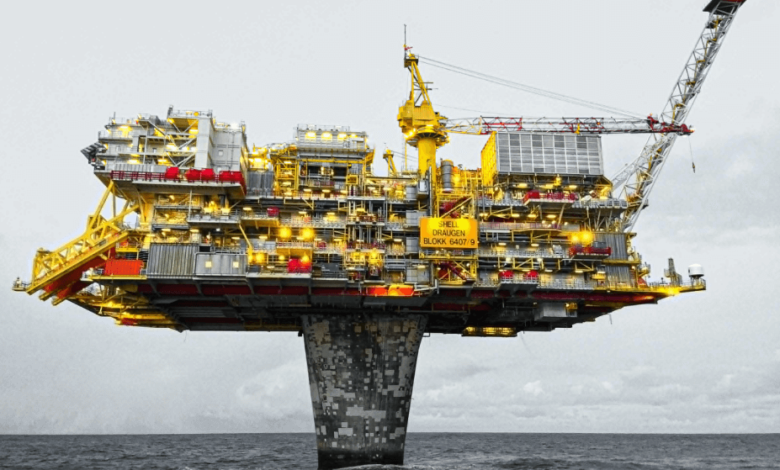Oil and Natural Gas Rally as Middle East Ignites and Dollar Tumbles

Energy markets took off mid-2025, catching a lot of people off guard who thought they were on their way down. Rising tensions in the Middle East and a sinking US dollar led to big jumps in oil and natural gas prices. This article discusses the factors influencing these changes and what might happen next.
Remember forecasts calling for an oil glut and lower prices in 2025? They look pretty off-target now. Instead, oil and natural gas staged a significant rally, catching many off guard. This price spike wasn’t due to increased demand or supply issues. It came from two main factors: geopolitical unrest and a falling US dollar. These events created major market volatility, overshadowing the usual supply and demand balance that suggested lower prices.
Crude Oil Investing Demands Agility
This year, crude oil investing requires your constant attention and flexibility. The first half of 2025 was a wild ride. Brent crude swung between roughly $61 and $85 per barrel. WTI followed suit, near $70 early on before plunging to the mid-$50s by April. That spring drop stemmed from real worries: ongoing global trade friction and, crucially, OPEC+’s choice to pump more oil. Analyst forecasts painted a pretty uncertain picture. Goldman Sachs saw Brent averaging around $76, potentially hitting $70-$85. J.P. Morgan was more cautious, expecting about $66. The EIA also leaned towards an average dipping below $70.
Investors often target high-yield stocks with stable dividends like Chevron and Enbridge to cushion price swings. Other active strategies use short-term volatility such as scalping or swing trading. Weekly EIA reports update and OPEC’s moves are non-negotiable. The key is knowing what’s happening.
See also: How AI Face Swap Technology Is Shaping Influencer Marketing
Geopolitical Risk Raises Prices
World events caused a surge in oil prices. In mid-June 2025, Israeli airstrikes on Iranian nuclear sites freaked out the markets and raised tensions in the Middle East. To top it off, there were threats to close the Strait of Hormuz, which carries a quarter of the world’s oil. As a result, Brent crude futures jumped to $74, reaching a six-month high.
This wasn’t blind panic. It reflected the market adding a tangible “geopolitical risk premium.” Analysts put numbers on it. Goldman Sachs figured tensions added about $10 per barrel. J.P. Morgan outlined nightmare scenarios where prices could hit $120-$130 if flows stopped completely. Traders weren’t betting oil shipments had halted. They bought because the risk of disruption surged, pushing prices up preemptively.
Dollar Dive Lifts Commodities
The US dollar’s steep fall became a hidden engine for gains. Here’s a crucial, often missed, factor: the greenback tanked in early 2025. The Dollar Index (DXY), tracking it against major currencies, fell 11%. It hit levels unseen since 1991. Policy under the Trump administration drove this. The push for “reciprocal tariffs” and a stated desire for a weaker dollar to boost exports created major uncertainty. The Federal Reserve’s dovish stance (think potential rate cuts) piled on, further weakening the dollar.
Why does this lift oil and gas? Simple. These commodities are priced globally in US dollars. When the dollar weakens, oil and gas get cheaper for buyers using euros, yen, or pounds. That naturally boosts international demand, lifting prices. This inverse relationship gave the energy rally a powerful, underlying push – separate from actual pipelines or production quotas. Currency markets matter more than you might think.
Natural Gas Weathers Its Own Storm
Natural gas faced distinct pressures from freezing winters and export demand. While oil grabbed headlines, gas had its own wild run. US prices surged a staggering 175.2% year-on-year by March 2025, hitting $4.13/MMBtu. Several forces collided. A brutally cold 2024/2025 winter across Europe spiked heating demand, tightening supplies globally. At the same time, global hunger for US Liquefied Natural Gas (LNG) stayed intense. New North American export projects are expected to drive 85% of the world’s 5% gas supply growth this year. And back home, the relentless expansion of power-hungry data centers added another layer of demand.
What’s next? The World Bank sees the US benchmark price climbing over 50% in 2025, with Europe up 6%. The IEA predicts global demand growing a modest 1.5%. Gas remains pivotal.
Supply-Demand Sends Mixed Messages
The rally had a different story beneath the surface. While geopolitics and a strong dollar pushed prices up, supply and demand trends hinted at trouble. OPEC+ had boosted output earlier, contributing to April’s price drop, but the real impact was from non-OPEC+ producers like the US, Canada, Brazil, and Guyana, expected to add 1.3 million barrels per day by 2025.
Demand, however, looked softer. The IEA lowered its 2025 global oil demand growth forecast to 740,000 barrels per day. Growth relies almost entirely on emerging economies, especially in Asia. In developed nations (OECD), faster electric vehicle adoption is steadily reducing oil use. This creates tension: fundamentals hinted at ample supply and potential price easing. But unpredictable global events and a weak dollar exerted strong upward pressure. The market felt pulled in two directions.
Volatility Reigns Supreme
Predicting the path ahead demands constant vigilance. Expecting calm in oil and gas markets for the rest of 2025 seems naive. Things are tense. Strong non-OPEC+ supply and lower demand are pushing prices down. Traders are focused on their screens, while pipeline pigs keep the lines clean and inspected without stopping the flow.
Still, geopolitical tensions and the dollar’s movements could create some big surprises. This guarantees more turbulence. Will Middle East tensions worsen or find an uneasy pause? Can the dollar find footing, or will policy keep it down? These questions dominate trading floors.





